Click The Image To Animate The Tree
After clicking the image to start the Christmas tree, after the file loads hover your mouse over the Christmas tree balls ... click on a large ball if it gets stuck ... and enjoy the little tune. If you can't see the whole image at once, press F11 for full screen mode (and again to exit that mode).
One week from tomorrow is the day of the vote. Most of the MAPS 3 posts I've made have tended toward the information side although I've given opinions, some fairly strong, as that information was presented. This one, though, presents no information, it only tells you how I'm voting, and why, from the perspective of history.
A City's Downtown Quality of Life Progress Doesn't Come Easy
Mid-1920s — 1932 1950s — 1960s Urban Renewal
1983 — Present History Lessons
MAPS 3 Is A Game Changer
The City Is Trustworthy Objections Don't Outweigh The Benefits
Most people probably have their minds made up by how as to how they will vote on December 8. I haven't seen any scientific polling that says that and that's just my guess. For whatever it may be worth, the poll that I've run here for several weeks show that 17 of the 229 voters are undecided which is a little over 7% of the total votes cast. The other 212 who voted as of November 30 at 7:45 a.m. have their minds already made up. At least some are undecided, and if you are one of those this article is for you!

I'll give a short version and a longer one. The short version is this:
- A city is largely measured by its downtown and its quality of life. A city's downtown is its heart and forms its identity as well as a huge part of its self-esteem. In but also beyond a city's downtown, a city needs a robust quality of life for its citizens. Otherwise (no disrespect intended), Gotebo would do just fine.
- One should never take the city's progress for granted. Looking back at the city's history shows periods of boom, periods of lethargy, and periods of bust. I'll detail those in the long version.
- MAPS 3 has the potential to dramatically change our city for the better — it is a game-changer. I'm NOT one of the people who say that if MAPS 3 doesn't pass, the city is somehow doomed. But, I am one who sees MAPS 3 as a golden opportunity to leap-frog over what might otherwise take decades to accomplish. The projects are good solid projects which will, at the least, improve the city's quality of life and, quite possibly, directly or indirectly cause substantial economic benefit to flow our way from people and/or businesses that are not part of our city today. That means tourism, and that means the possibility of attracting businesses to locate here. If the latter does occur, that's a plus. But the quality of life factor for our citizens will occur, regardless.
- City officials can be trusted to live up to their end of the deal. Even though MAPS 3 does, in fact, place a heck of a lot of trust in our elected officials to complete the projects the city says it will complete, the trust is warranted.
- The objections to MAPS 3 are insufficient for us not to take advantage of the opportunity presented. Some objections make no sense at all, and they can be discarded out of hand. Other objections have a more reasoned basis and some do have merit. However, in balance, such objections do not outweigh what the city has to gain if MAPS 3 passes.
1. HOW IS A CITY MEASURED? Put differently, what makes a city a great place to live and a great place to visit and want to come back to again? Doubtless many different items fall into the mix other than those I'm about to mention, but it is easy enough to identify two of the essentials:
a. Downtown. A city's downtown is its heart and heartbeat, the focal point of its identity. It is fair to say that a city's downtown affects not only people who live and work there, it affects the remainder of the city and all of its parts, as well. Think about it — when you think of other cities, what's the first thing that comes to mind? One doesn't need to be an urban planning expert to know that the answer is, "downtown." Petula Clark (or her lyricist) is presumably not an authority on cities, but I think you'll agree that her 1965 tune correctly captures the essence of what most of us want in a downtown: vibrancy, lots of people, and lots of things to do.
| The lights are much brighter there, you can forget all your troubles, forget all your cares, so go downtown, things'll be great when you're Downtown - no finer place, for sure; Downtown - everything's waiting for you. Don't hang around and let your problems surround you, there are movie shows - downtown; Maybe you know some little places to go to where they never close - downtown | Just listen to the rhythm of a gentle bossa nova, you'll be dancing with him too before the night is over, happy again; The lights are much brighter there, you can forget all your troubles, forget all your cares; So go downtown, where all the lights are bright, Downtown - waiting for you tonight; Downtown - you're gonna be all right now |
2. One should never take the city's progress for granted. I'm not going to spend time chronicling Oklahoma City's growth beginning with the original MAPS. Everyone in the city already knows that story and we rightly take pride in telling it. We also know that Devon Energy Corporation has already begun construction of the tallest and largest and most beautiful building this city and state has ever known, paying for that building from its own resources without a need to obtain outside financing. I'm not going to spend any time saying that, relatively speaking, Oklahoma City has so far weathered the economic crisis which hit this country last year rather nicely, even though government and other budgets are tightening. I'm not going to itemize how much attention the city has garnered during the past year in the national press and business journals for the strength of its economy and just being a good place to live.
But, I will ask you to do this: Consider whether this city would be faring as well as it is today had the city's business community and political leaders not had the vision that they did in 1992 when the idea of Metropolitan Area Projects was first born? Would this city have been in a position to weather the nation's current economic crisis as well as it has had it not been for MAPS? I'm accepting it as a given that our answers to those questions would be nearly unanimous that not only did MAPS contribute greatly to the city's quality of life, MAPS was also largely responsible for the economic growth which occurred here beginning in the mid-to-late 1990s and through the current decade. I submit to you that because of the vision of MAPS Oklahoma City is faring well today, even if it is marking time until the national economy picks up again.
I want to spend a few minutes, though, stepping back in time and see what lessons history may have for us today.
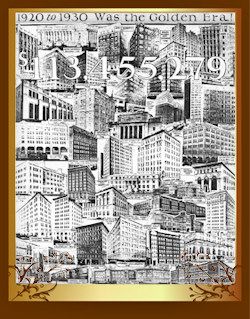 a. Mid-1920s through 1932. This period was one of Oklahoma City's most vital periods of growth. The city's population doubled between the 1920 and 1930 census – 91,295 to 185,380 – and the list of buildings constructed during the period may well be the most impressive for any decade-or-so in the city's history.
a. Mid-1920s through 1932. This period was one of Oklahoma City's most vital periods of growth. The city's population doubled between the 1920 and 1930 census – 91,295 to 185,380 – and the list of buildings constructed during the period may well be the most impressive for any decade-or-so in the city's history. 
The city's 1st truly inaugural skyscrapers, 1st National Bank and the Ramsey Tower, were competing in a race to which 33-story skyscraper got done first in 1930-1931, and numerous other buildings, notably the 26 story Biltmore hotel, were adding fuel to the fire of the city's exponentially developing downtown. By the end of 1931, our city boasted two of the tallest buildings built in all of US cities, 12th only behind New York City, Cleveland, Cincinnati, Chicago, Detroit, Columbus, Pittsburgh, Seattle, Baltimore, Houston and Kansas City. Oklahoma City bested cities such as Los Angeles, Minneapolis, Boston, St. Louis, St. Paul, Philadelphia, Dallas, Memphis, Miami, Denver, and other cities in its ranking. See Skyscrper City Circa 1931 and The Golden Era, 1920-1932.
When the Great Depression found its way to Oklahoma City, its burgeoning development came to a virtual stand-still. Aside from the federally-assisted WPA Civic Center projects during the 1930s, downtown development in Oklahoma City stopped and remained largely stagnant for about 40 years – count 'em – 40 years – until the early days of urban renewal in the 1960s-1970s.
Why such a long wait? World War II, of course, was a primary reason. But after the war, what then? Was a vision presented which might have avoided and taken a different turn than the Pei Plan and Urban Renewal which emerged in 1965 and destroyed 40% of downtown as we knew it? Yes, such a vision was offered.
Before I.M. Pei, there was Harland Bartholomew & Associates, a prestigious St. Louis city planning and landscape architecture group that was engaged by the city in 1945 to consider various matters, including the city's downtown riverfront area. That firm presented a stunning proposal which would have changed downtown quite remarkably ...
Click the image for a larger view and more of the article
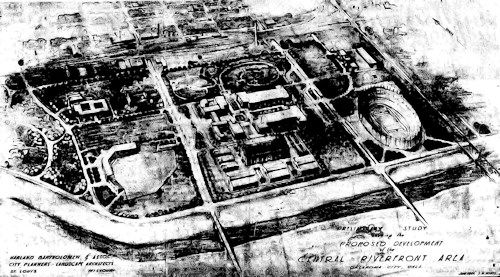
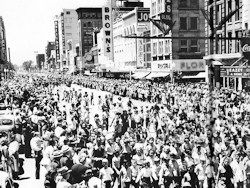 b. The 1950s-1960s. I'll take personal privilege here and tell you a bit about my connection with Oklahoma City. Although I was born at St. Anthony's, my family moved from Oklahoma City shortly after I was born in 1943. Later, largely being reared in Lawton, my family came to Oklahoma City for family visits when I was a grade-schooler and teenager. After I became involved in high school debate, many trips were made here in my high school years. Upon graduation from Lawton High in 1961, I was an OSU student for four years followed by law school at OU for three, graduating there in 1968 while clerking in a law firm here in 1966-68. This time between grade, junior and high school while living in Lawton during the early 1950s through completion of my formal education in 1968 was when my impressions of Oklahoma City were initially formed. It is the time that I knew Springlake Amusement Park, the Park-O-Tell north of the State Capitol, Beverly's Chicken-In-The-Rough, Toddle House on NW 23rd, and, downtown, John A. Brown's, Rothschild's, the Central domino parlor north of the county courthouse, and the movies — Cinerama at the Cooper, high balconies at the Midwest, classy movies at the State, and many other things which indelibly imprinted themselves on a young and impressionable mind. It is the time that affection for the city of my birth resonated through and through, and it is the time that I knew where I wanted to come to live. Following a two-year stint in the US Army, this has been my physical home since 1970 and it seems as though my earlier childhood homes were way-stations along the way until I finally got back to where I started from.
b. The 1950s-1960s. I'll take personal privilege here and tell you a bit about my connection with Oklahoma City. Although I was born at St. Anthony's, my family moved from Oklahoma City shortly after I was born in 1943. Later, largely being reared in Lawton, my family came to Oklahoma City for family visits when I was a grade-schooler and teenager. After I became involved in high school debate, many trips were made here in my high school years. Upon graduation from Lawton High in 1961, I was an OSU student for four years followed by law school at OU for three, graduating there in 1968 while clerking in a law firm here in 1966-68. This time between grade, junior and high school while living in Lawton during the early 1950s through completion of my formal education in 1968 was when my impressions of Oklahoma City were initially formed. It is the time that I knew Springlake Amusement Park, the Park-O-Tell north of the State Capitol, Beverly's Chicken-In-The-Rough, Toddle House on NW 23rd, and, downtown, John A. Brown's, Rothschild's, the Central domino parlor north of the county courthouse, and the movies — Cinerama at the Cooper, high balconies at the Midwest, classy movies at the State, and many other things which indelibly imprinted themselves on a young and impressionable mind. It is the time that affection for the city of my birth resonated through and through, and it is the time that I knew where I wanted to come to live. Following a two-year stint in the US Army, this has been my physical home since 1970 and it seems as though my earlier childhood homes were way-stations along the way until I finally got back to where I started from.But a child's eyes wouldn't know or care that downtown was beginning to suffer in the 1950s-1960s because of burgeoning suburban shopping districts. Much less would a child know that mayors and city council members were trying to turn back the tide of those developments from the late 1950s through the late 1980s, and, despite valiant efforts, they were largely failing in those efforts. At another level, a child or very young adult wouldn't know or care about the importance to a city's identity of ties between the old and the new — why the Baum Building, the Commerce Exchange, the Huckins Hotel, even the Skirvin, were important not only to the past but equally to the present, just as were the prospect of the 1960s-1970s Urban Renewal projects were to the city's future.
c. Urban Renewal. It is said that what goes around comes around. Whether earlier efforts would have successfully thwarted the destruction of about 40% of downtown in an effort to save it, we will never know. We do know that by the mid-to-late 1950s, city leaders recognized the need to try to do something about downtown, to save it. City leaders resorted to radical solutions, perhaps all they had left after a long period of neglect. The resulting plan, Urban Renewal, would change our city forever, for good or for ill.
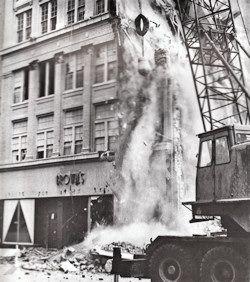 Fast forwarding and in hindsight, we know now that Urban Renewal's promise to create a city of the future, with exceptions, was a failure and directly resulted in the destruction of about 40% of our city's downtown past. We know that, toward the end of Mayor Patience Latting's mayoral term and beginning with the Penn Square Bank failure in 1982 and continuing through all of Andy Coats' 1983-1987 term, the city's best efforts to turn the city around were meeting with failure after failure. Left: Credit OKC: 2nd Time Around.
Fast forwarding and in hindsight, we know now that Urban Renewal's promise to create a city of the future, with exceptions, was a failure and directly resulted in the destruction of about 40% of our city's downtown past. We know that, toward the end of Mayor Patience Latting's mayoral term and beginning with the Penn Square Bank failure in 1982 and continuing through all of Andy Coats' 1983-1987 term, the city's best efforts to turn the city around were meeting with failure after failure. Left: Credit OKC: 2nd Time Around.Say what you like about suburban development, but like I said already a city, by and large, is measured by and identified with its downtown, and that's not only by "outsiders." It was so for me in my own child-visits to "The City," and downtown was the principal area that supplied the definition. But, after becoming a resident during that low-point in the city's self-esteem, I distinctly recall my lack of city pride and thinking that there was utterly nothing special, nothing vital, about the city of my birth any more — the nostalgic old downtown had been destroyed and the promise of a new phoenix had proven hollow and at the great cost of forever removing most of that part of downtown that part of downtown that had once been its charm, its allure.
So, when out-of-town friends would come to visit, would you even talk about your city and if you did what would you say? "Hey, let me show off my city a little ... let's drive out to the newest and best suburban strip shopping center!" Right, like a city's suburban development is or should be the showplace, the hallmark, the place that identifies and defines the city. In that day, one would surely NOT say, "Hey, let's go downtown! It's the best place to be!" — not unless one was completely out of touch with reality. If downtown would come up in the conversation, one could only say, "Nothing to do there, it's a 9-5 Monday-Friday area, nothing to see, nothing to do." Credit the photos below to Steve Lackmeyer and Jack Moneys' OKC: 2nd Time Around.
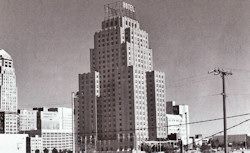 | 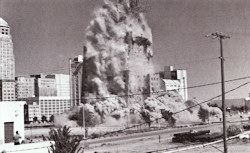 |
d. 1983 — PRESENT. It took a heck of a lot of time, and a heck of a lot of vision by city leaders, to shake off that poor self-identity. But, the good news is, it did happen. Fast-forwarding yet again, this time to the post-MAPS era, it's now different, isn't it — if not a 180° change, it's not far from it.
** Omitted Mayors: (1) Jack Wilkes (1963-1964) who resigned after a year in office to become president of Centenary College, Shreveport, Louisiana; (2) Guy Liebmann who served as mayor from November 2003 – March 2004 to fill the remainder of Kirk Humphreys' term, he having resigned to run in an unsuccessful bid for Congress.
The restoration of city pride didn't come easy. One cannot say that Mayor Andy Coats did not give his all in trying to turn around this city in the midst of the Oil Bust. Three times his leadership caused tax and bond measures to be presented the public. Three times those measures substantially failed at the polls. Even though he was elected by a 68% landslide, his popularity was not sufficient to overcome the resistance to people deciding to tax themselves. In his first State of the City address, he said,
If, however, we are to build a great city, then we must have the vision and the courage to generate and spend the money necessary to ensure the highest quality of life for our people. I believe serious consideration must be given to raising city revenues.
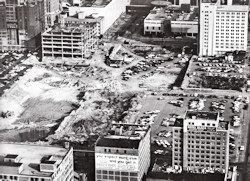 Sounds familiar. But he was also burdened by the city's immediate past failure, Urban Renewal. Throughout his term of office the city had not given up on the possibility that crown jewel of Urban Renewal, the downtown retail galleria, might yet become a reality. His first attempt failed by only 31 votes, the largest opposition being from Ward 5. The 1983 6-year penny sales tax measure would have funded basic infrastructure like sewers and roads. His 1984 tax initiative was a 5-year penny sales tax, it being actively opposed by Ward 6 council member Jerry Gilbert. This measure failed by a tally of 58% to 42%. Above photo: credit OKC: 2nd Time Around.
Sounds familiar. But he was also burdened by the city's immediate past failure, Urban Renewal. Throughout his term of office the city had not given up on the possibility that crown jewel of Urban Renewal, the downtown retail galleria, might yet become a reality. His first attempt failed by only 31 votes, the largest opposition being from Ward 5. The 1983 6-year penny sales tax measure would have funded basic infrastructure like sewers and roads. His 1984 tax initiative was a 5-year penny sales tax, it being actively opposed by Ward 6 council member Jerry Gilbert. This measure failed by a tally of 58% to 42%. Above photo: credit OKC: 2nd Time Around.In his last State of the City address, Mayor Coats was quoted to say in OKC: Second Time Around by Steve Lackmeyer and Jack Money as follows:
It was time for some brutal truth-telling about what Coats declared as "the massive malaise that exists in our economy." The city's population had dropped for the first time in decades. Unemployment was on the rise as so many skilled workers were fleeing to other cities, Coats said. Four city banks already had failed, and the trouble did not appear to be over yet. "We've become so used to it that it doesn't bother us," Coats said. "We don't pay any attention ... we've taken the downturns in stride."His 3rd and final tax measure, called "Six To Fix," was a mixed sales tax and bond election for specific individual projects, in six separate ballots. This, too, was actively opposed by council member Jerry Gilbert. The measures related to public safety and traffic passed but the more ambitious projects, notably an sports arena at the State Fairgrounds, failed miserably.
Mayor Coats, trying as hard as one could possibly try, had not turned the city around, and he did not run for re-election. The time of Mayor Ron Norick had arrived. The front-runners in a field of 7 candidates were Pete White, Ward 4 Council Member, and Ron Norick, son of former mayor James Norick, and Norick won without a runoff by garnering 50.6% of the vote.
Norick, new to city politics, wasn't the visionary leader in his first term that most think of him today. In his first term, he, too, supported a tax initiative. Like the three failed measures during Mayor Coats' tenure, this one failed, also. As for the City Council, some of its sessions were marked by division and contention -- even, on one occasion, a council member throwing a coffee stirrer at another. Norick's first term ended with little change, although the economy had started to pick up a little. Still, the city was marked by
- Low self-esteem
- Low hope for the future
- Continuing diminishment of the importance of downtown
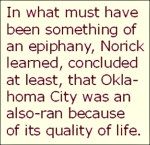 In Ron Norick's second term, the city (and state) had campaigned hard to persuade United Airlines to locate a major maintenance facilty here. In the end, Oklahoma City was only second-best, Indianapolis being selected as the United Airlines city. In what must have been something of an epiphany, Norick learned, concluded at least, that Oklahoma City was an also-ran because of its quality of life.
In Ron Norick's second term, the city (and state) had campaigned hard to persuade United Airlines to locate a major maintenance facilty here. In the end, Oklahoma City was only second-best, Indianapolis being selected as the United Airlines city. In what must have been something of an epiphany, Norick learned, concluded at least, that Oklahoma City was an also-ran because of its quality of life.Quality of life, as in the quality of life in Oklahoma City. Oklahoma City was not attractive to non-Oklahoma companies for that reason, he concluded. Maybe he wasn't aware, but it wasn't attractive to many of its residents for the same reason. WE KNEW what the city HAD BEEN. We knew that IT WASN'T.
In a Chamber of Commerce retreat held east of Oklahoma City (either at at St. Crispin's, an Episcopal retreat center near Seminole, or in Shawnee — I've heard both, but maybe there were two retreats), in a brainstorming session the ideas which would become the city's Metropolitan Area Projects (MAPS) was born. Norick came to like what he heard, and he undertook to make that plan his own. Through a series of consensus building activities, the final MAPS plan finally came to be. Some capital improvements, like a new downtown art center, did not make the cut. The items which did, in an up or down, take none or all, 5-year penny sales tax vote were:
- An AAA baseball park, most likely in Bricktown
- A basketball or hockey arena, but to NBA and NHL requirements, most likely located south of the convention center
- Major renovation to the Civic Center Music Hall
- A downtown library and learning center
- Additions and renovations to the Myriad Convention Center
- North Canadian River major improvements, adding three dams, and causing it to become a waterfront property
- A canal in Bricktown
- State Fairground improvements
- A transportation link, hopefully rail, between downtown and the I-40 and Meridian area, dependent upon federal funding
Although the public was a bit or a lot ancy early on, it wanting to see promised results and with some angst about construction costs exceeding estimates, by the end of Mayor Norick's third term, the public slowly began to become amazed at the changes being made in their city — they were actually getting something for the tax. More than buildings and projects, the city was getting its groove back, it was recovering its lost self-esteem. Before long, the city was hooked. Even with an insufficient amount of revenue to complete the sports arena and/or the downtown library and learning center by the end of his 3rd term, they to pay a little bit more to get all projects done.
Below: 2 top pictures credit to OKC: 2nd Time Around; 3rd: Mark Klett, Photographing Oklahoma 1889/1991; 4th: Me.
 | 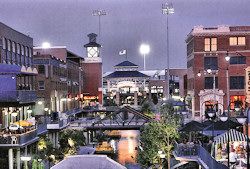 |
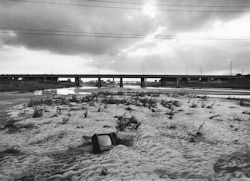 |  |
Norick did not run for a 4th term. Kirk Humphreys, running on a campaign to "Finish MAPS right, won the 1998 mayoral race. Scoring 45.64% in the initial vote, he won the runoff handily against Ward 8 council member Guy Liebmann, 67.6% to 32.4%. When it came time to vote on a 6-month extention of MAPS to complete its projects, the tax extension carried by 67.67%, and MAPS got done.
Looking back, other than the desired transportation link, you don't need me to tell you what happened. Other than the hoped-for rail transportation link (it failing to gain the support it needed from Oklahoma Congressman Earnest Istook, the result of which was that we wound up with a few buses that looked something like trolley cars ... thanks again, buddy, for absolutely nothing in representing your Oklahoma City district), we know that MAPS has transformed our city. Even present-day MAPS 3 opponent Brian Walters said, when pressed in a November 22 KFOR-TV Flashpoint show by Former Mayor Kirk Humphreys, that he supported the original MAPS.
Maybe he did, but forty-six percent (46%) of Oklahoma City voters did not. Had that 46% been 50.01% instead, the city we know today could not possibly have been the city that we do know today.
MAPS For Kids followed. Scores of city public schools were improved and/or rebuilt. In Mayor Cornett's tenure, the groundwork earlier laid by a proactive city government during Mayor Humphrey's time came to fruition for the dazzling renovation and restoration of the Skirvin as the Skirvin Hilton Hotel. Bricktown continued to blossom with the addition of a pair of new hotels and residential development along Walker got done and more residential development north of Deep Deuce continued apace. Thanks to the timely leadership of Mayor Cornett, when the city of Seattle and state of Washington virtually handed us an NBA franchise on a silver platter, we said, "Thank you, thank you very much, we'll take care of it," and a temporary city sales tax to improve the Ford Center and build a practice facility passed (ironically over the opposition of some of the same MAPS 3 opponents today).
e. Lessons Taught If Not Learned. The national recession started about a year ago, and that brings us to today. If all of the words above have any use in this at all it is this: It is foolhardy to take progress for granted. After the mid-1920s to 1932 boom, the city languished for thirty to forty years before serious efforts were made to attend to downtown's needs. The 1946 efforts to do that were unheeded — visionaries were not then en vogue.
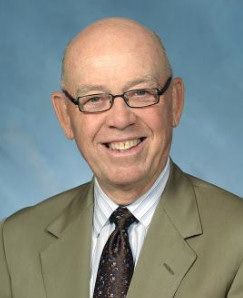 I don't typically cite letters to the editor or a newspaper's editorial positions as authority for anything in particular, but today I will. In a November 30 opinion piece in the Oklahoman, Oklahoma City University President Tom McDaniel wrote a piece that I would have been proud to have written myself. His comments, taken together with the above history, are right on the mark:
I don't typically cite letters to the editor or a newspaper's editorial positions as authority for anything in particular, but today I will. In a November 30 opinion piece in the Oklahoman, Oklahoma City University President Tom McDaniel wrote a piece that I would have been proud to have written myself. His comments, taken together with the above history, are right on the mark:Vision is not about what we are. It is about who we are and who we aspire to be. Vision is limited for those with short-term, selfish goals and naysayers who see every glass half empty.I'll disagree slightly with him about one thing — every generation does NOT have such an opportunity. From 1932 until 1993, no real visions were presented to a vote of the people (with the possible exception of Mayor Coats' 1986 Six To Fix proposal which was far less sweeping than 1993's MAPS). The Pei Plan/Urban Renewal was decided by the City Council and was never submitted to a vote of the people, so it's hard to call that adventure an opportunity for the citizens to "say Yes."
Vision is about saying yes — yes to momentum, to big ideas, to being all that we can be, and to dreams that reach beyond our own lives to those who will follow. Every generation has an opportunity to say yes to a vision.
But, the real point is this: Oklahoma City progress should not be taken for granted. After the boom which ended in 1931-32, the city languished for 30 years' time and it took 40 years before any products were on the ground to do anything about it (Liberty Tower was completed in 1971). During the Urban Renewal period, efforts were made and some fine accomplishments occurred, but, in the aftermath and looking backward, the city's self-esteem was decimated and probably reached one of its lowest levels in this city's history.
Following that experience, not decided by the people but only by decision of the City Council, it was incredibly difficult for the city to finally find itself again and begin, again, to like who we are, the city that we have become, today.
3. MAPS 3 has the potential to dramatically change our city for the better — it is a game-changer. In my above summary, I said,
I'm NOT one of the people who say that if MAPS 3 doesn't pass, the city is somehow doomed. But, I am one who sees MAPS 3 as a golden opportunity to leap-frog over what might otherwise take decades to accomplish. The projects are good solid projects which will, at the least, improve the city's quality of life and, quite possibly, directly or indirectly cause substantial economic benefit to flow our way from people and/or businesses that are not part of our city today. That means tourism, and that means the possibility of attracting businesses to locate here. If the latter does occur, that's a plus. But the quality of life factor for our citizens will occur, regardless.I've listened closely to what both official opponents and proponents have said about the projects. If you haven't, you can, too.
For complete audios and detailed summaries of each of the three "Breaking Through" Chamber of Commerce luncheons which discussed each project and which included four non-Oklahoma speakers, go here. As to issues between the city and the Firefighters and FOP, the complete audio and a substantial transcript of each of the competing press conferences is located in the Great MAPS 3Debate article. And lots more information is contained in the All The News About MAPS 3 article.
Above, I said that I see MAPS 3 as a "game changer." Mayor Cornett often uses the phrase, "step on the accelerator," and that's how I see MAPS 3, too. I won't fully itemize the projects here since they are already described in another article. Looking at the big picture, I see Central Park as changing downtown forever in a unique and remarkable way for the whole of the city — the park isn't just your neighborhood park, it's a park for the whole city with events year-round, a place for the whole city to congregate, and it's in exactly the right place. I see the Oklahoma River changes as locking in the city as the premier venue for rowing events in the entire country and the canoe/kayak/rafting course as rounding out the city's attraction for water sport national competition. National attention and recognition could not but be enhanced by a new convention center, our present facility being too small to handle middle-sized conventions, our present facility being small than similar facilities in Tulsa, Wichita, and Des Moines. And the prospect and promise of downtown modern streetcars just blows my mind away. After listening to the mayor of North Little Rock about how popular its senior citizen center has become to its residents, the value of 4 or 5 such projects in the city can easily be seen.
Most of us probably did not foresee the astonishing magnitude of city progress that MAPS would generate — I mean, who would have thought that Bricktown would become what it has become and is ever becoming, who would have thought much about the potential value of the Bricktown Canal; who would have thought that Oklahoma City would become a premier rowing venue for national and international competition as a result of Oklahoma River actually coming to have water in it? The progress, and the growing city pride, was infectious, spawning billions of dollars in private investment in the city, and I don't think that is an overstatement. Without MAPS, Devon would not be building as we speak the most magnificent structure in the history of our city and state right in the heart of downtown.
With that history behind us, and knowing what we know, I want more of the same. I want it for my children, my grandchildren, and I want it for me. MAPS 3 is an visionary opportunity to seize and solidify our city's future.
4. City officials can be trusted to live up to their end of the deal. Even though MAPS 3 does, in fact, place a heck of a lot of trust in our elected officials to complete the projects the city says it will complete, the trust is warranted.
a. Police & Firefighters. Doubtless, the police and fire unions which are warring with the city over their contract and staffing needs see the matter of trust differently, and I am at least partially persuaded that some basis in fact does indeed exist at least concerning the firefighters. Some but certainly not all of those issues have been discussed in this article on the Great MAPS 3 Debate, but I am certain that I have not heard the full story, including both sides of the story. None of us who are not directly involved in those matters probably will ever hear the full story and even those who are directly involved (the city, the two unions) will have point and counterpoint ad nauseum since neither side can likely be counted on to objectively present both sides of the arguments and issues involved. As far as MAPS issues are concerned, I don't see the above as particularly relevant since MAPS 3 is about capital improvements and not permanent staffing of police and firefighters. The unions have tried to blur that distinction, but they are mistaken in doing so, in my opinion. More about that below, in section 5.
b. Has The City Delivered Its Best On MAPS? What I DO see as particularly relevant is whether the city has delivered on its previous MAPS promises, or not, and if not, why not. That 16-year history, 1993 to 2009, between city government and the public at large is ever so much more relevant in determining whether the city is to be trusted in keeping its capital improvement promises — and capital improvements are all that any version of MAPS is about — than are the warring city vs. union positions. From this perspective, the questions are: In original MAPS, and in MAPS For Kids, and in the March 4, 2008, Ford Center vote, has the city done its best to keep its promises?
The general answer to all questions is, "Yes, it has." To be sure, in original MAPS, project cost projections did not match what costs actually turned out to be. A fine article by Steve Lackmeyer and Jack Money in the November 15, 1998, Oklahoman discusses the cost projection vs. cost reality problems nicely. A very small crop of that article appears below — click the link just given or the image below for the complete and very lengthy article.
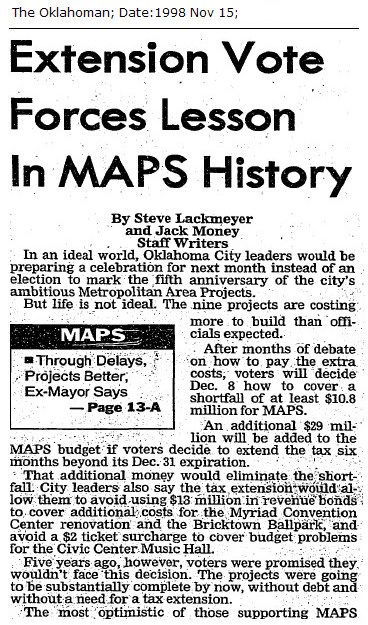
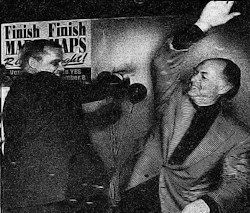 Were voters who, by this time, had begun to see what MAPS was doing for the city, appalled and outraged? The photo during the evening of the 12/9/1998 election tells the story. Click the image for the full story and click here for the front page headlines. A whopping 67.67% of the voters approved the 6-month extension.
Were voters who, by this time, had begun to see what MAPS was doing for the city, appalled and outraged? The photo during the evening of the 12/9/1998 election tells the story. Click the image for the full story and click here for the front page headlines. A whopping 67.67% of the voters approved the 6-month extension.Why? The answers are obvious: The public liked what they'd seen, and the reason for cost estimates not matching reality were made honestly and in good-faith and had nothing to do with misplaced trust in the city to do its job as well as it was able to do.
MAPS for Kids followed in 2001. Would the voters approve a $700 Million package which included a 7-year $512 Million extension of the penny sales tax and a $180 Million bond package for the benefit of Oklahoma City's public schools? On December 13 the voters said, "Yes. Do it." In a time that bond elections still required a "super-majority" of 60% to be approved, the bond issue carried by only 400 votes, a shade over 60%. The sales tax measure, only needing 50%, passed by 61%. See this article and this article if you want to read up on this vote.
Most recently, the city had an opportunity to step into the black hole which existed in Seattle and Washington state and position itself to become an NBA city — but for that to happen, most probably the city would need to pass yet another sales tax vote to improve the Ford Center and build a practice facility for the team owned by the Professional Basketball Club, LLC, Clay Bennett being the group's leader and spokesperson.
| You already know what happened and in very short order but it's fun as well as useful to revisit that time once again since it was oh so very very fine. Led by Mayor Cornett in December 2007, the council placed the matter for vote on March 4, 2008. | |
| A contentious campaign ensued. Opponents were anchored on people like David Glover who lives in the Village, Steve Hunt (known by the pseudonym Blazerfan11 at OkcTalk.com) -- I'd earlier said that Steve didn't live in Oklahoma City but David Glover corrected me about that in a comment to this article, below -- as well as an anonymous guy from California who seemed to think that Oklahoma City's business was his, also. David is more or less local (since he lives lives in the metro) even if he is not an Oklahoma City voter. That's kinda fair since he lives in the metro, even if he and the California guy didn't routinely or perhaps ever divulge that they had no vote in the March 4 election, and that appears to be the same for David in the upcoming December 8 election. When the March 4, 2008, vote was done, the city repudiated those guys and said, "Yes, we do trust our leaders, and we do want this project." The vote was 62% yes, 38% no. Let's hear that grand tune and remember that glory vote, one more time ... click a control, above, to start or stop the sound which remains music to our ears to this very day. | |
Our city has a history since 1993 of trusting its leaders, and, so far, no impediments relating to honesty or intentions to carry out the voters mandate has been misplaced. The city government has earned the trust that we place upon them if MAPS 3 is approved by you and me.
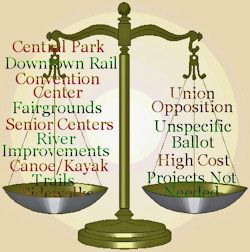 5. Objections Do Not Outweigh The Benefits. In my initial synopsis, I said,
5. Objections Do Not Outweigh The Benefits. In my initial synopsis, I said,The objections to MAPS 3 are insufficient for us not to take advantage of the opportunity presented. Some objections make no sense at all, and they can be discarded out of hand. Other objections have a more reasoned basis and some do have merit. However, in balance, such objections do not outweigh what the city has to gain if MAPS 3 passes.Above, I have said what I think the city has to gain by passing MAPS 3. This section briefly considers the objections and leaves it for you to decide if those objections carry more weight on a balance scale than does what the city has to gain. You already know my opinion. The rest, figure out and decide for yourself. I'll add some observations for you to consider.
a. Union Opposition. Frankly, public safety union opposition is too disingenuous to be taken seriously, since both unions were apparently prepared to support MAPS 3 if their contract negotiations with the city were satisfactorily resolved. As to the firefighters, see this November 10 Journal Record article. For the FOP, see the November 10 letter from its attorney to the City Manager. In both, it is obvious that the unions were prepared to support MAPS 3 IF contract issues with the city were resolved. The union objections to MAPS 3 lack credibility.
b. Unspecific Ballot. Most everyone, I'm sure, would have preferred a ballot like 1993 MAPS which specifically identified each capital improvement project on the ballot. Earlier, I've said that I hadn't seen any legal authority to support the city's statement that such a ballot was no longer legally permissible. As was pointed out by Urban Pioneer in this post at OkcTalk,
The single-subject rule is also generally applicable to municipal ordinances under 11 O.S. § 4-104 ("An ordinance may contain only one subject and the subject shall be expressed in its title.") and specifically applicable to OKC ordinances under OKC Charter Art. II, §25 ("No ordinance shall contain more than one subject, which shall be clearly expressed in its title.")Coupled with his other comments, it does appear that an original 1993 MAPS-type ballot would not pass legal muster. Hence, the unspecific ballot which only identifies that the tax money will be used for capital improvements, generally. The accompanying City Council resolution provides the specificity and although it is true that the city council could legally change that resolution by a majority vote, as I've already said above, I have confidence that our present and future mayors and council members will see that the projects do get done.
c. High Cost. You betcha, $777 Million in anticipated tax receipts over a 7 ¾ year span is a heck of a lot of money. But, it's not money that we're going to miss since the sales tax rate we are paying now will not change if MAPS 3 passes. As I've already said above, I see the projects as visionary for the city and I agree with the mayor that they will transform the city (some more than others). We will be getting bang for the buck, in my opinion.
d. Projects Not Needed. The same thing could have been said about 1993 MAPS and, in fact, that ballot passed by only 54% of the vote. I suppose that whether the projects are "needed" or not depends on what kind of a city we want to have. I want the "visionary" type. It's like I said above,
Most of us probably did not foresee the astonishing magnitude of city progress that MAPS would generate — I mean, who would have thought that Bricktown would become what it has become and is ever becoming, who would have thought much about the potential value of the Bricktown Canal; who would have thought that Oklahoma City would become a premier rowing venue for national and international competition as a result of Oklahoma River actually coming to have water in it? The progress, and the growing city pride, was infectious, spawning billions of dollars in private investment in the city, and I don't think that is an overstatement. Without MAPS, Devon would not be building as we speak the most magnificent structure in the history of our city and state right in the heart of downtown.
With that history behind us, and knowing what we know, I want more of the same. I want it for my children, my grandchildren, and I want it for me. MAPS 3 is an visionary opportunity to seize and solidify our city's future.
To me, the kind of city I want for my children and grandchildren falls into the "needs" category, even though it matches my "wants" as well. If that's how you see it, voting Yes on December 8 may well be the thing for you to do. It's your call to make.
That's all, this post is done. Go to the polls on December 8 and vote for the kind of city you want Oklahoma City to be, whatever that means to you.

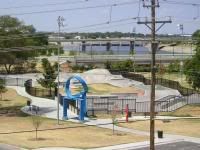

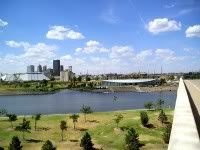
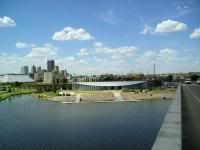
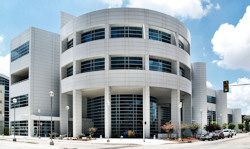

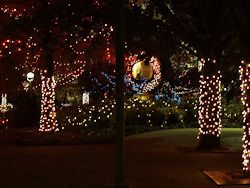
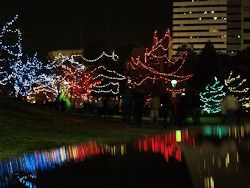
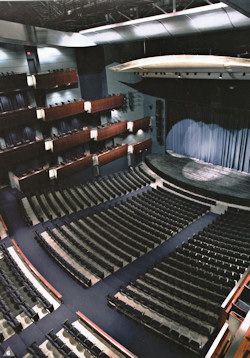
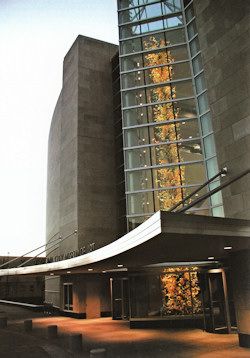
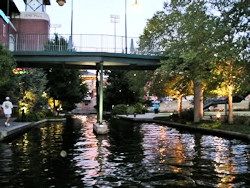
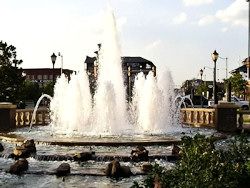
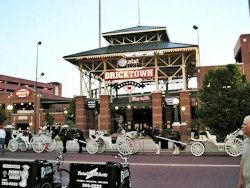
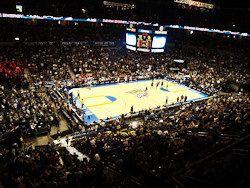




















8 comments:
Doug - this is a very good article.
Thank you, flintysooner!
Hi Doug,
I know you try to be fair and accurate. Steve Hunt lived and lives inside the borders of OKC. I am surrounded by and live on the border of OKC in the Village. I notice many YES supporters do not live in OKC. We all express our opinion on what we think is best short term and long term for the citizens.
Thanks, David. I'll fix it after I attend an event this evening.
Well the NTM campaign has put signs, indiscriminately, everywhere. Most of them are in right of ways, which is illegal, and all over suburbs that aren't OKC. The chamber on the other hand actually tells its volunteers to not do that and the software they have that organizes the list of addresses requesting yard signs actually automatically roots out non-OKC addresses. Just to address David's point.
Great post Doug. I appreciate your candor and your fair assessment. It's not perfect, but it's the closest to ideal we can get it, given the changes in the law and the timing. What it comes downs to is whether people believe in this city or not, and I never would have thought we'd have to reconvince people in OKC (not New Orleans or Seattle) to believe in OKC. But that's where we are. If the turnout is the same people as the previous elections, this one's in the bag. If we have a lot of voters who are new to MAPS issues, I'm extremely worried. Extremely.
I just hope it passes. I've been posting my little hiney off over at my blog, as well. I will be rendered completely useless all day tomorrow due to having my fingers crossed all day until 6 pm mountain time (7 pm central). And let's not forget to say our prayers for the city. I fear we're gonna need a hail mary to rescue this one from overtime.
Thanks, Nick, I've been following your blog's posts closely, too.
I'm not particularly if at all religious, so I won't be praying for victory in the vote. On the other hand, I might be thinking to god, "God, please don't fuck this one up ... you know how this should turn out, don't you?" But, then again, I may not, since that's a bit presumptuous.
Anyway and regardless, the die is cast and the votes will be gathered tomorrow.
Yeah I was just building up my rhetoric for a "hail mary". Me and you have talked religion before and I wouldn't normally bring religion up on your blog..ha
It's OK if you do, Nick. I do believe in the angels who have been guarding over me lo these many years. So there you go!
Post a Comment